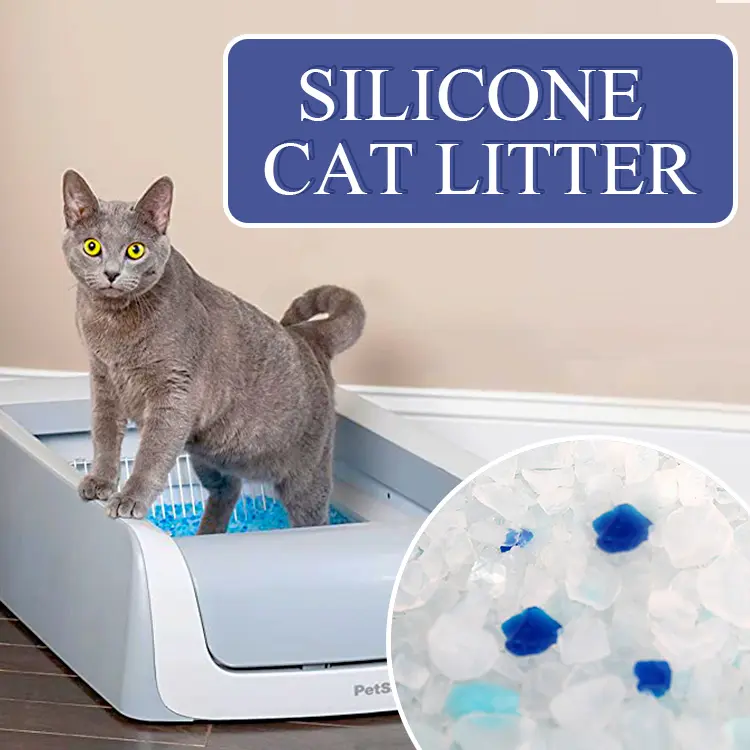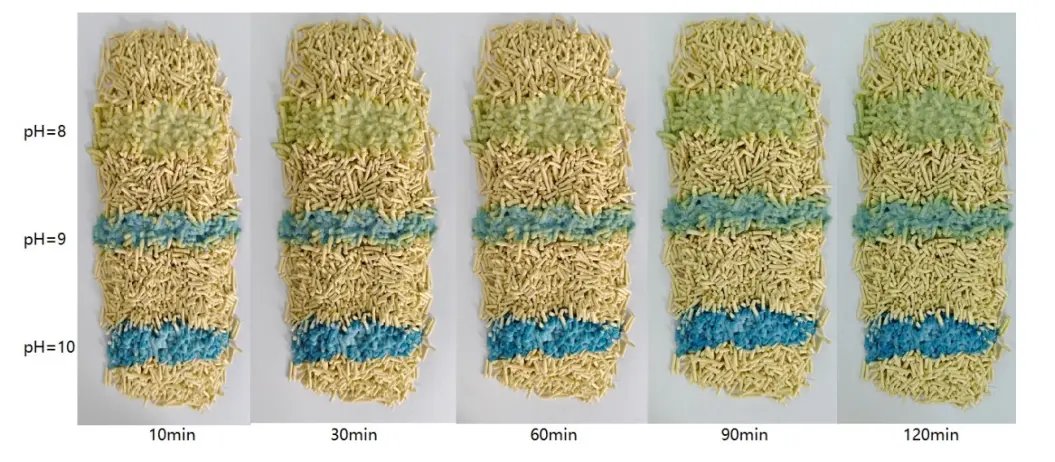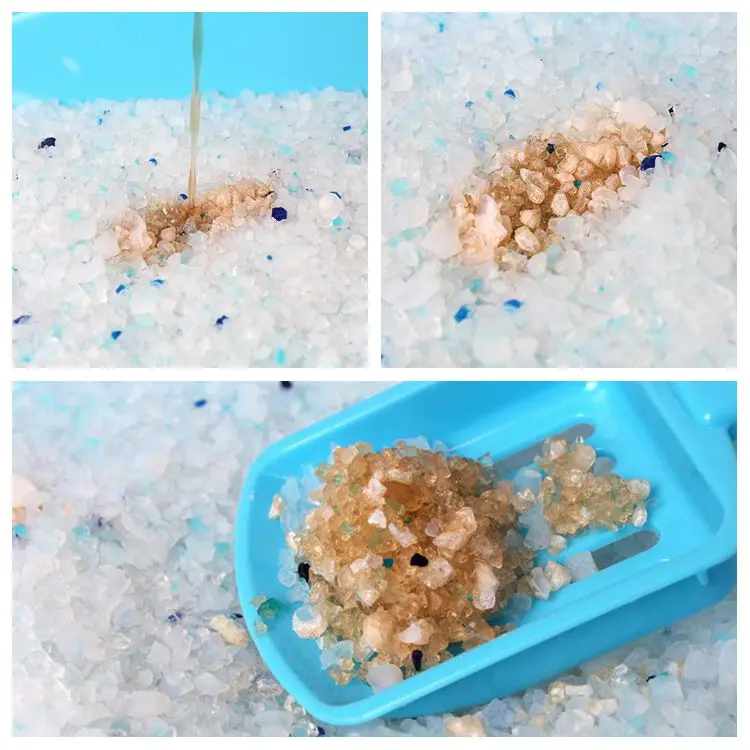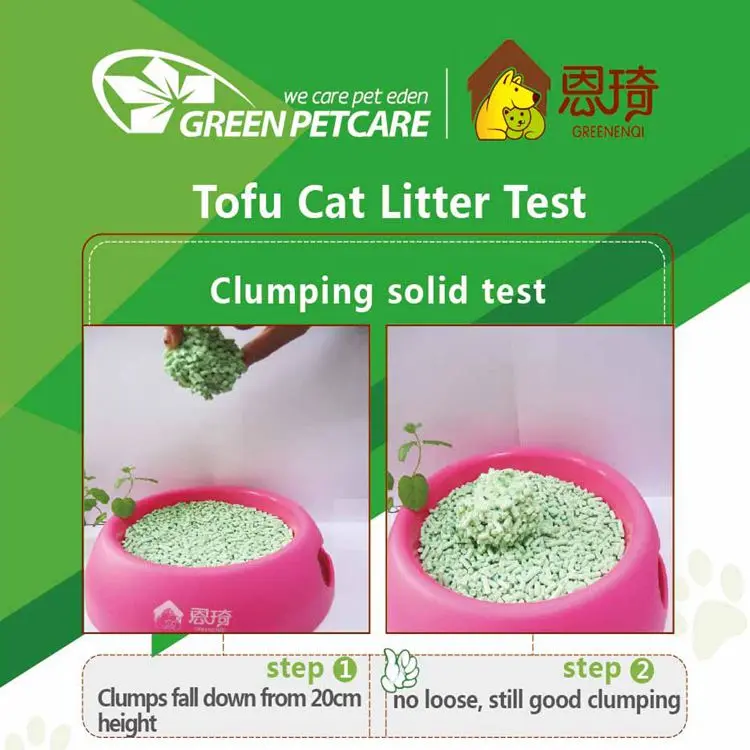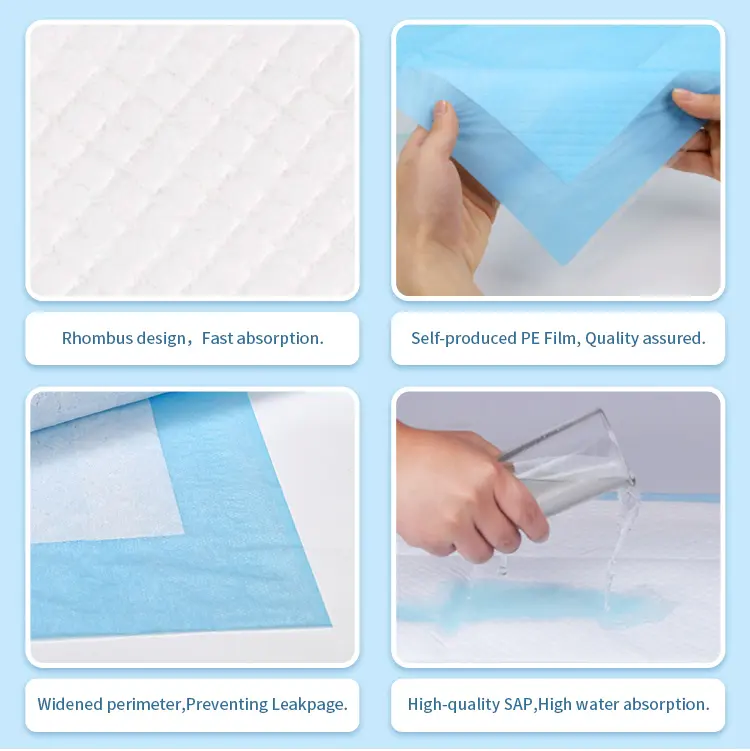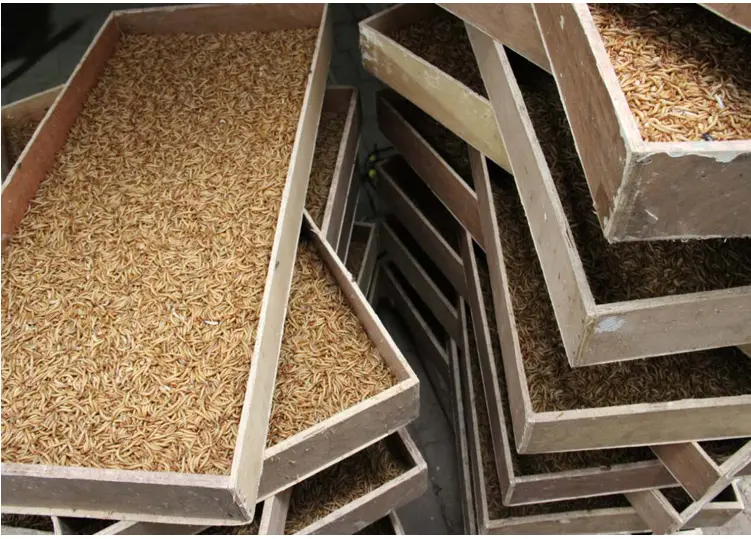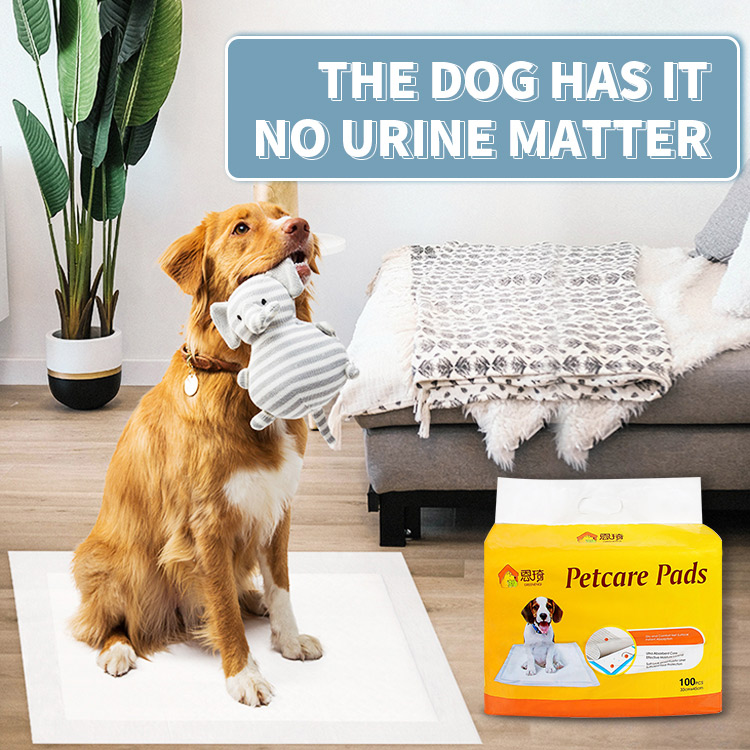High Protein, Low Carb Dry Cat Food: A Nutritional Revolution for Your Feline Friend
In the evolving world of pet care, the emphasis on nutrition has never been more critical. As pet owners increasingly treat their cats as family members, the demand for high-quality, nutritionally balanced cat food has surged. Among the most popular dietary choices for cats today is high protein, low carb dry cat food. This diet aligns closely with a cat's natural eating habits, providing them with the essential nutrients they need while minimizing unnecessary carbohydrates. This article delves into the benefits, considerations, and specific market data related to high protein, low carb dry cat food, concluding with a look at how Green Pet Care Co., Ltd. can cater to these needs.
The Science Behind High Protein, Low Carb Diets for Cats
Cats are obligate carnivores, meaning their bodies are naturally designed to thrive on animal-based proteins. Unlike humans and some other animals, cats have a limited ability to digest and utilize carbohydrates. Instead, they rely heavily on proteins and fats to meet their energy needs. A high protein, low carb diet mimics the nutritional composition of a cat’s natural prey, such as birds and small mammals.
Benefits of High Protein, Low Carb Diets:
Weight Management: Obesity is a growing concern among domestic cats. High protein diets help cats feel full longer, reducing overall food intake and aiding in weight management. By minimizing carbohydrates, which are often stored as fat, these diets help prevent excessive weight gain.
Improved Energy Levels: Cats on high protein diets often exhibit more stable energy levels. Proteins provide a slow and steady release of energy, which is ideal for cats who are naturally active predators.
Better Muscle Maintenance: Proteins are the building blocks of muscle tissue. A diet rich in protein ensures that your cat maintains lean muscle mass, even as they age. This is particularly important for older cats who may start to lose muscle mass.
Enhanced Digestion: Cats on low carb diets often experience fewer digestive issues. Carbohydrates, particularly grains, can be difficult for cats to digest and can lead to gastrointestinal problems. High protein, low carb diets reduce the risk of these issues.
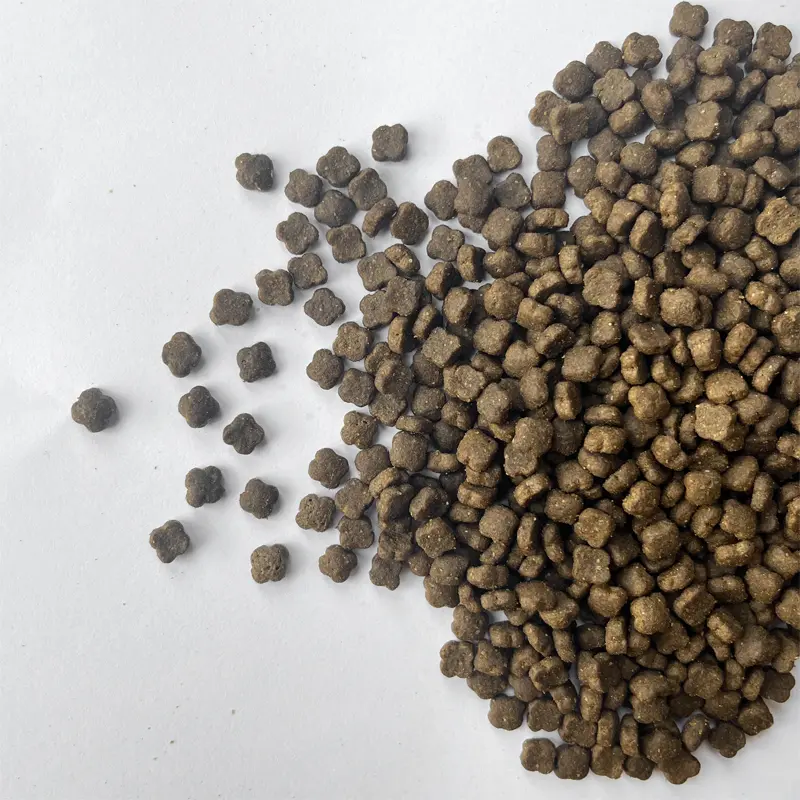
Market Trends and Data on High Protein, Low Carb Cat Food
The shift toward high protein, low carb cat food is supported by market data showing increased consumer demand for premium, nutritionally balanced pet foods. According to recent industry reports:
Growth in Premium Pet Food Sales: The global premium pet food market was valued at approximately USD 40 billion in 2020 and is expected to grow at a compound annual growth rate (CAGR) of 7.4% from 2021 to 2028. A significant portion of this growth is driven by the demand for high protein, low carb cat food.
Consumer Preferences: A survey conducted by the American Pet Products Association (APPA) in 2022 revealed that over 65% of cat owners prefer purchasing high-protein, low-carb food options for their pets. This trend is particularly strong among younger pet owners, who are more informed about the nutritional needs of their cats.
Health Concerns: Pet obesity rates are rising, with over 50% of cats in the U.S. classified as overweight or obese. This has led to a growing interest in diets that support weight management, such as high protein, low carb options.
Increased Online Sales: The convenience of online shopping, coupled with the availability of detailed product information, has made it easier for cat owners to choose specialized diets. Online pet food sales have seen a substantial increase, with a notable shift towards premium products like high protein, low carb dry cat food.
Considerations When Choosing High Protein, Low Carb Dry Cat Food
While the benefits of a high protein, low carb diet are clear, it’s essential to make informed choices when selecting a product. Here are some key factors to consider:
Ingredient Quality: Not all proteins are created equal. Look for cat food that lists high-quality animal proteins, such as chicken, turkey, or fish, as the first ingredient. Avoid products with vague terms like "meat by-products" or "animal meal."
Carbohydrate Sources: While low carb is the goal, some carbohydrates are better than others. Ingredients like sweet potatoes or peas are preferable to grains like corn or wheat, which can be difficult for cats to digest.
Nutrient Balance: Ensure that the food provides a balanced ratio of proteins, fats, and other essential nutrients. A good high protein, low carb cat food should also contain taurine, an amino acid crucial for heart and eye health in cats.
Life Stage Appropriateness: Cats have different nutritional needs at various stages of life. Make sure the food you choose is suitable for your cat's age, whether they're a kitten, adult, or senior.
Brand Reputation: Opt for reputable brands that prioritize transparency and quality in their ingredient sourcing and manufacturing processes.
The Benefits of High Protein, Low Carb Diets for Cats
High protein, low carb diets have become increasingly popular among cat owners, and for good reason. These diets are designed to mimic the natural eating habits of cats, who are obligate carnivores and thrive on a diet rich in animal proteins with minimal carbohydrates. Here’s a closer look at the benefits:
1. Supports Lean Muscle Maintenance:
Cats require a higher percentage of protein in their diet compared to dogs or humans. This is because protein is essential for building and maintaining muscle mass. As cats age, they naturally start to lose muscle mass, a condition known as sarcopenia. High protein diets help combat this by providing the necessary amino acids for muscle repair and growth.
A case study conducted by the Journal of Animal Science demonstrated that cats fed a high-protein diet had a significant increase in lean body mass compared to those on lower protein diets. This is particularly important for aging cats, as maintaining muscle mass contributes to overall mobility and health.
2. Weight Management:
Obesity is a common issue among domestic cats, with over 50% of cats in the United States classified as overweight or obese, according to the Association for Pet Obesity Prevention. A high protein, low carb diet can be a key factor in managing your cat’s weight. Protein is more satiating than carbohydrates, meaning cats feel full longer after eating, which can help reduce overall food intake.
A 2018 study published in the journal Veterinary Sciences found that overweight cats placed on a high protein, low carb diet lost significantly more weight and body fat than those on a standard diet. The study also showed that these cats retained more lean muscle mass during weight loss, which is crucial for maintaining a healthy metabolism.
3. Stabilizes Blood Sugar Levels:
Carbohydrates, particularly simple sugars, can cause spikes in blood sugar levels, leading to fluctuations in energy and, in some cases, contributing to insulin resistance and diabetes. Cats on a high protein, low carb diet often experience more stable blood sugar levels, reducing the risk of developing diabetes.
This is particularly beneficial for cats already diagnosed with diabetes. A study in the Journal of Feline Medicine and Surgery reported that diabetic cats fed a high protein, low carb diet showed better glycemic control and, in some cases, could reduce their insulin dosage. This diet essentially mimics the metabolic conditions of a wild cat’s diet, which is low in carbohydrates.
4. Improved Digestion and Reduced Gastrointestinal Issues:
Many commercial cat foods contain fillers and grains that can be difficult for cats to digest. This can lead to gastrointestinal issues such as bloating, diarrhea, and food sensitivities. By reducing carbohydrates and focusing on high-quality animal proteins, a high protein, low carb diet can alleviate these digestive problems.
In a clinical trial conducted by the Pet Nutrition Alliance, cats with chronic gastrointestinal issues were transitioned to a high protein, low carb diet. The majority of the cats showed a significant reduction in symptoms, including vomiting and diarrhea, within a few weeks. This suggests that for cats with sensitive stomachs, such a diet could be highly beneficial.
A high protein, low carb diet aligns closely with a cat’s natural nutritional needs and offers numerous benefits, including better muscle maintenance, weight management, stabilized blood sugar levels, and improved digestion. For pet owners looking to optimize their cat’s health, this dietary approach is worth considering. At Green Pet Care Co., Ltd., we offer a range of high-quality, high protein, low carb dry cat food that is specifically formulated to meet these needs, ensuring your cat stays healthy, active, and happy.
How Can I Transition Your Cat to a High Protein, Low Carb Diet?
Transitioning your cat to a high protein, low carb diet is a process that requires patience and careful planning. Cats can be notoriously picky eaters, and sudden changes in diet can lead to digestive issues or rejection of the new food. Here’s a step-by-step guide to making the transition smooth and successful:
1. Understand the Importance of a Gradual Transition:
Cats have sensitive digestive systems, and sudden changes in diet can cause gastrointestinal upset, including diarrhea, vomiting, or constipation. A gradual transition allows your cat’s digestive system to adjust to the new food. The general recommendation is to take about 7-10 days to complete the transition, but some cats may require a longer period, especially if they are particularly finicky or have underlying health issues.
2. Step-by-Step Transition Process:
Day 1-3: Start by mixing 25% of the new high protein, low carb food with 75% of the old food. Monitor your cat for any signs of digestive distress, such as loose stools or vomiting.
Day 4-6: Increase the ratio to 50% new food and 50% old food. Continue to observe your cat’s behavior and stool consistency.
Day 7-9: Transition to 75% new food and 25% old food. At this stage, your cat should be adjusting well to the new diet, but continue to monitor for any signs of discomfort.
Day 10: Finally, you can offer 100% of the new high protein, low carb food. By now, your cat should be fully adjusted to the new diet.
3. Addressing Picky Eaters:
Some cats are more resistant to change than others, especially if they have been on the same food for a long time. If your cat refuses to eat the new food, try the following tips:
Mix in a favorite treat: Adding a small amount of a favorite treat or a flavor enhancer like tuna water can make the new food more appealing.
Warm the food: Warming the food slightly can enhance its aroma, making it more enticing for your cat.
Try different flavors or textures: Some cats may prefer a different flavor or texture within the same high protein, low carb category. Experiment with different options until you find one that your cat enjoys.
4. Monitor Your Cat’s Health:
During the transition, keep a close eye on your cat’s overall health. Monitor their weight, coat condition, energy levels, and stool quality. Any significant changes, particularly if your cat loses weight rapidly or shows signs of distress, should be discussed with your veterinarian.
In a study published by the Journal of Feline Medicine and Surgery, it was found that a significant percentage of cats initially resist dietary changes but eventually adapt successfully when the transition is done gradually and with careful monitoring.
5. Consult with Your Veterinarian:
If your cat has specific health conditions, such as diabetes or kidney disease, consult with your veterinarian before making any dietary changes. High protein, low carb diets can be beneficial for many cats, but individual health conditions may require a tailored approach. Your vet can provide guidance on the best way to transition your cat and monitor any potential health impacts.
Case Study:
One pet owner shared their experience on a popular pet care forum, detailing the successful transition of their 10-year-old diabetic cat to a high protein, low carb diet. Initially, the cat was resistant to the new food, but by following a gradual transition plan and incorporating some of the cat’s favorite flavors, they were able to make the switch within two weeks. The result was a significant improvement in the cat’s blood glucose levels and overall energy, demonstrating the positive impact of the diet change.
Transitioning your cat to a high protein, low carb diet can offer numerous health benefits, but it’s important to do so gradually and with care. By following a step-by-step plan and paying close attention to your cat’s response, you can ensure a smooth and successful transition. Green Pet Care Co., Ltd. offers a range of high-quality, high protein, low carb dry cat food options that can support your cat’s health and well-being throughout this process.

High Protein, Low Carbohydrate Cat Food Suitable for Cats
While high protein, low carb cat food is beneficial for many cats, it’s essential to consider whether this diet is suitable for all cats. Various factors, including age, health status, and individual preferences, can influence whether this type of diet is the best choice for your feline friend. Here’s an in-depth look at when high protein, low carb cat food is appropriate and when other dietary considerations might be necessary.
1. High Protein, Low Carb Diets and Different Life Stages:
Kittens: Kittens have high energy needs to support their rapid growth and development. A high protein diet is particularly beneficial during this stage, as it provides the necessary building blocks for muscle and tissue development. However, kittens also require certain carbohydrates for energy, so a slightly higher carb content may be appropriate. It’s essential to choose a high protein, low carb food that is specifically formulated for kittens, ensuring they receive a balanced diet.
Adult Cats: For healthy adult cats, a high protein, low carb diet is often ideal. It supports lean muscle maintenance, helps regulate weight, and provides steady energy levels. Most adult cats thrive on this type of diet, as it closely mimics their natural eating habits as obligate carnivores.
Senior Cats: Senior cats may benefit from a high protein, low carb diet, especially if they are experiencing muscle loss or weight management issues. However, as cats age, their kidney function may decline, and a diet excessively high in protein could exacerbate kidney issues. It’s important to consult with a veterinarian to determine the appropriate protein level for a senior cat.
2. Health Conditions to Consider:
Diabetes: Cats with diabetes can benefit significantly from a high protein, low carb diet. Carbohydrates can cause spikes in blood sugar levels, and reducing them in the diet helps stabilize these levels, potentially reducing the need for insulin. Numerous studies, including one published in the Journal of Feline Medicine and Surgery, have shown that diabetic cats on a high protein, low carb diet have better glycemic control and may even achieve remission in some cases.
Kidney Disease: Cats with kidney disease require a careful balance of nutrients. While protein is essential, excessive protein can put a strain on the kidneys. For cats with kidney disease, a diet with moderate protein levels and controlled phosphorus content is often recommended. Low carb diets can still be suitable, but the protein levels should be adjusted according to the cat’s kidney function, under the guidance of a veterinarian.
Obesity: For overweight or obese cats, a high protein, low carb diet can be effective for weight loss. Protein is more satiating than carbohydrates, helping cats feel full longer and reducing overall calorie intake. A study by the Journal of Animal Science demonstrated that cats on a high protein, low carb diet lost more weight while maintaining muscle mass compared to those on a high carb diet.
3. Individual Preferences and Palatability:
Cats are known for being finicky eaters, and individual preferences can play a significant role in diet suitability. Some cats may not take well to a high protein, low carb diet, especially if they are used to a different type of food. Palatability is crucial, and finding a high-quality, high protein, low carb cat food that your cat enjoys is essential for long-term dietary success.
In a survey conducted by Pet Food Industry, it was found that approximately 30% of cat owners had difficulty transitioning their cats to a high protein, low carb diet due to taste preferences. However, once the right flavor or texture was found, the majority of cats adapted well to the new diet.
High protein, low carb cat food offers many benefits, particularly for healthy adult cats, diabetic cats, and those needing weight management. However, it’s not a one-size-fits-all solution. Factors such as age, health conditions, and individual preferences must be considered. For kittens and senior cats, as well as those with specific health issues like kidney disease, it’s crucial to consult with a veterinarian to ensure the diet meets their unique needs. At Green Pet Care Co., Ltd., we offer a range of high-quality, high protein, low carb dry cat food that caters to various life stages and health conditions, ensuring your cat receives the best nutrition possible.
Make Sure Your Cat Gets Enough Exercise
Ensuring that your indoor cat gets enough exercise is crucial for their overall health and well-being. Indoor cats can easily become sedentary, leading to weight gain, muscle atrophy, and behavioral issues. Here’s how you can keep your cat active and healthy:
1. Understanding the Importance of Exercise for Indoor Cats:
Cats are natural hunters, and in the wild, they spend a significant amount of time stalking, chasing, and capturing prey. This level of activity keeps them physically fit and mentally stimulated. Indoor cats, however, may not have the same opportunities to engage in these instinctual behaviors, leading to a more sedentary lifestyle.
Lack of exercise in indoor cats can result in obesity, which affects over 50% of domestic cats in the United States, according to the Association for Pet Obesity Prevention. Obesity can lead to various health issues, including diabetes, joint problems, and heart disease. Regular exercise helps maintain a healthy weight, supports muscle tone, and provides mental stimulation, which can prevent behavioral problems such as aggression or depression.
2. Engaging Your Cat in Physical Activities:
Interactive Playtime: One of the most effective ways to get your cat moving is through interactive play. Toys that mimic prey, such as feather wands, laser pointers, and toy mice, can encourage your cat to chase, pounce, and leap. Aim for at least two 10-15 minute play sessions per day. A study published in the Journal of Feline Medicine and Surgery found that regular interactive play significantly reduces the risk of obesity in indoor cats and improves their overall behavior.
Environmental Enrichment: Creating an environment that encourages physical activity is key. Cat trees, scratching posts, and climbing shelves provide opportunities for your cat to jump, climb, and scratch. Puzzle feeders and treat-dispensing toys can also stimulate both their mind and body as they work to retrieve their food.
Harness Training: Some indoor cats can be trained to walk on a harness and leash, allowing them to safely explore the outdoors. This not only provides physical exercise but also exposes them to new sights, smells, and sounds, which can be mentally enriching. A case study documented in The Journal of Applied Animal Welfare Science showed that cats trained to walk on a leash exhibited lower levels of stress and anxiety compared to those confined indoors without enrichment.
3. Monitoring and Adjusting Exercise Levels:
Each cat is unique, and their exercise needs may vary depending on their age, breed, and health status. For instance, younger cats and certain active breeds like Bengals or Siamese may require more vigorous exercise compared to older or more sedentary cats.
Regularly monitor your cat’s weight, body condition, and overall activity levels. If you notice that your cat is gaining weight despite regular exercise, you may need to increase the duration or intensity of playtime or consult with your veterinarian about adjusting their diet.
4. Combining Diet with Exercise:
Exercise alone may not be enough to keep your indoor cat in optimal health. It’s important to combine physical activity with a balanced diet. High protein, low carb diets, like those offered by Green Pet Care Co., Ltd., can help maintain lean muscle mass while supporting healthy weight management.
A 2019 study in the Journal of Animal Physiology and Animal Nutrition found that cats fed a high protein diet in conjunction with regular exercise maintained a healthier body weight and had lower levels of fat mass compared to those on lower protein diets. This combination can help prevent obesity and related health issues.
Ensuring your indoor cat gets enough exercise requires a combination of interactive play, environmental enrichment, and careful monitoring. By providing opportunities for physical activity and mental stimulation, you can help your cat maintain a healthy weight, prevent behavioral issues, and improve their overall well-being. Green Pet Care Co., Ltd. offers a range of products designed to support an active lifestyle for indoor cats, from high-quality toys to nutritious cat food that complements their exercise routine.
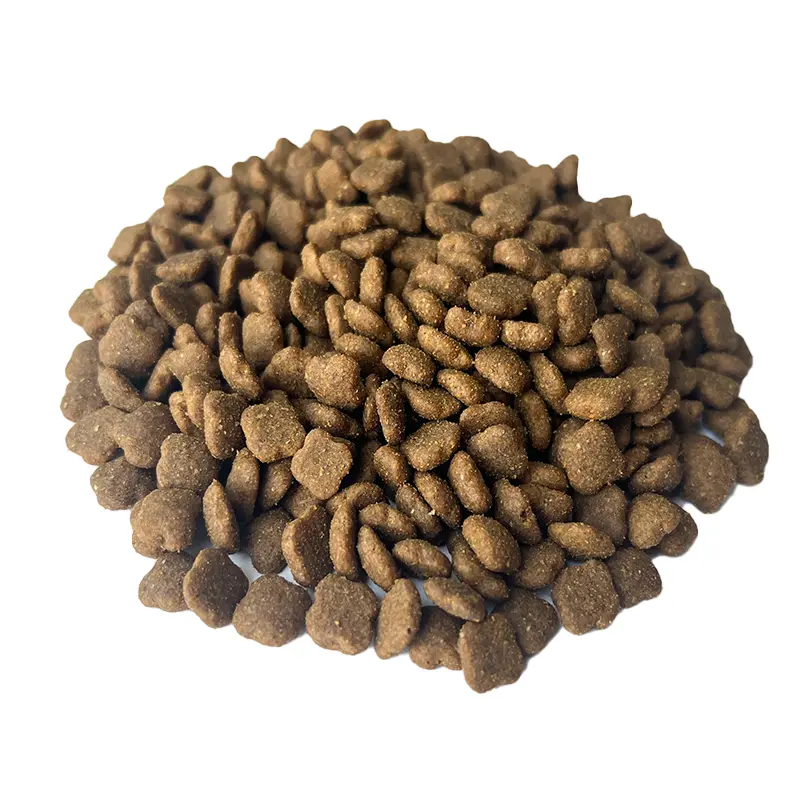
The Environmental Impacts of Different Types of Cat Litter
The environmental impact of cat litter is a growing concern for eco-conscious pet owners. With millions of tons of cat litter ending up in landfills each year, understanding the environmental implications of different types of cat litter can help you make more sustainable choices for your home and the planet.
1. Clay-Based Cat Litter:
Traditional clay-based cat litter, particularly clumping varieties, is one of the most popular types on the market. However, its environmental impact is significant due to the way it is sourced and disposed of.
Mining Impact: Clay-based litter, especially sodium bentonite, is sourced through strip mining, a process that involves removing large amounts of earth to access the clay. This method is highly destructive to ecosystems, leading to habitat loss, soil erosion, and water pollution. A report by the World Wildlife Fund highlighted the detrimental effects of strip mining, noting that it contributes to biodiversity loss and long-term soil degradation.
Non-Biodegradability: Clay litter is non-biodegradable, meaning it doesn’t break down in landfills. With approximately 2 million tons of cat litter disposed of annually in the United States alone, the accumulation of non-degradable waste poses a significant environmental challenge.
2. Silica Gel Cat Litter:
Silica gel cat litter, also known as crystal litter, is another popular choice due to its absorbency and odor control. However, it also has notable environmental drawbacks.
Production Process: Silica gel is produced from sand, a process that requires significant energy and resources. While it doesn’t involve the destructive mining processes associated with clay, the energy-intensive production contributes to greenhouse gas emissions.
Waste Management: Like clay litter, silica gel is non-biodegradable. While it produces less waste in terms of volume due to its absorbency, it still contributes to landfill accumulation.
3. Biodegradable Cat Litter:
Biodegradable cat litters, made from materials like wood, corn, wheat, paper, and even tofu, are increasingly being adopted by eco-conscious pet owners. These litters are designed to break down more quickly and naturally, reducing their environmental impact.
Sustainable Sourcing: Many biodegradable litters are made from renewable resources or waste byproducts. For example, wood-based litters often use sawdust, a byproduct of the lumber industry, which would otherwise go to waste. This reduces the environmental impact associated with sourcing raw materials.
Biodegradability: One of the key advantages of biodegradable litter is that it breaks down naturally, either in compost or in landfills. A study published in the Journal of Environmental Management found that certain types of biodegradable cat litter, such as those made from corn or paper, decomposed within 60-90 days in a composting environment, significantly reducing landfill waste.
Carbon Footprint: The production of biodegradable litter typically has a lower carbon footprint compared to clay or silica gel. For example, Green Pet Care Co., Ltd. produces cat litter made from recycled paper and corn, which not only minimizes waste but also reduces the carbon footprint associated with raw material extraction and processing.
4. Flushing and Environmental Impact:
Some biodegradable litters are marketed as flushable, claiming they can be safely disposed of in the toilet. However, this practice is controversial. Flushing cat litter can contribute to plumbing issues and environmental concerns, such as introducing pathogens like Toxoplasma gondii into water systems. A study by the Environmental Protection Agency (EPA) warned against flushing cat litter, as it could harm aquatic life and contaminate water supplies.
When it comes to the environmental impact of cat litter, biodegradable options are generally the most sustainable choice, particularly those made from renewable or recycled materials. They offer the benefits of reduced landfill waste and a lower carbon footprint, making them a better option for eco-conscious pet owners. However, it’s important to consider the full lifecycle of the product, including sourcing, production, and disposal methods, to make the most informed and environmentally friendly choice. Green Pet Care Co., Ltd. offers a range of eco-friendly, biodegradable cat litters that are designed to minimize environmental impact while providing effective odor control and absorbency.
Effectively Deal with Cat Litter Box Odors
Managing litter box odor is a common concern for cat owners. While it’s impossible to eliminate all odors completely, there are several strategies you can employ to minimize and manage them effectively, ensuring a fresher and more pleasant home environment.
1. Choose the Right Cat Litter:
The type of cat litter you use plays a significant role in controlling odor. Some litters are more effective at neutralizing odors than others. Here’s a look at different options:
Clumping Clay Litter: Clumping litter is popular because it forms solid clumps when it comes into contact with moisture, making it easier to remove waste and control odor. However, not all clumping litters are equally effective. Look for varieties that contain odor-absorbing additives, such as activated charcoal or baking soda. A study published in the Journal of Feline Medicine and Surgery found that litters containing activated charcoal were more effective at controlling ammonia odor than standard clay litters.
Silica Gel Litter: Silica gel crystals are highly absorbent and can lock in moisture and odor. This type of litter is known for its ability to control odor for longer periods without needing frequent changes. However, it may not be suitable for all cats, as some may find the texture uncomfortable.
Biodegradable Litter: Some biodegradable litters, particularly those made from corn, wheat, or wood, offer excellent odor control. For instance, corn-based litters naturally neutralize odors due to their high absorbency. In a comparative study published in the Journal of Applied Animal Research, biodegradable litters were found to be as effective, if not more, than clay-based litters in controlling odor, while also being eco-friendly.
2. Maintain a Regular Cleaning Routine:
Even with the best litter, regular cleaning is essential to keep odors at bay. Here’s what you can do:
Scoop Daily: Scooping out waste daily is the most effective way to prevent odors from building up. The longer waste sits in the litter box, the more odor it produces, particularly as it breaks down and releases ammonia. A survey by the Pet Care Industry Association found that cat owners who scooped daily reported significantly less odor compared to those who scooped less frequently.
Replace Litter Regularly: Even if you scoop daily, the litter itself can become saturated with odors over time. Depending on the type of litter and the number of cats you have, it’s recommended to completely replace the litter every 1-2 weeks. Clumping litters may last longer, but non-clumping and biodegradable litters may need more frequent changes.
Wash the Litter Box: Every time you replace the litter, it’s a good idea to wash the litter box with mild soap and water. Avoid using strong-smelling cleaners, as the scent can deter cats from using the box. After washing, rinse thoroughly and let the box dry completely before adding fresh litter.
3. Consider Litter Box Placement and Ventilation:
The location of your cat’s litter box can also influence odor management. Place the litter box in a well-ventilated area to allow fresh air to circulate, which can help disperse odors. Avoid placing the litter box in confined spaces, such as closets or small bathrooms, where odors can become concentrated.
Some cat owners use air purifiers near the litter box to help filter out odors. An air purifier with a HEPA filter and activated carbon can effectively reduce airborne particles and neutralize odors.
4. Use Deodorizers and Additives:
Deodorizers and litter box additives can provide an extra layer of odor control. Here are a few options:
Baking Soda: Sprinkling a thin layer of baking soda at the bottom of the litter box before adding litter can help absorb odors. Baking soda is a natural deodorizer and is safe for cats.
Litter Box Deodorizers: There are commercial products specifically designed to neutralize litter box odors. These deodorizers often contain natural or chemical agents that trap and neutralize odors. However, it’s important to choose a product that is non-toxic and safe for cats.
Odor-Control Liners: Some litter boxes come with liners that have odor-control properties. These liners can help contain odors and make cleaning easier, though they may not be suitable for cats that tend to scratch through liners.
Managing litter box odor requires a combination of choosing the right litter, maintaining a consistent cleaning routine, and optimizing the litter box environment. By implementing these strategies, you can significantly reduce odors and create a more pleasant living space for both you and your cat. At Green Pet Care Co., Ltd., we offer a range of cat litter products designed for superior odor control, including options with natural deodorizers and high absorbency to keep your home smelling fresh.
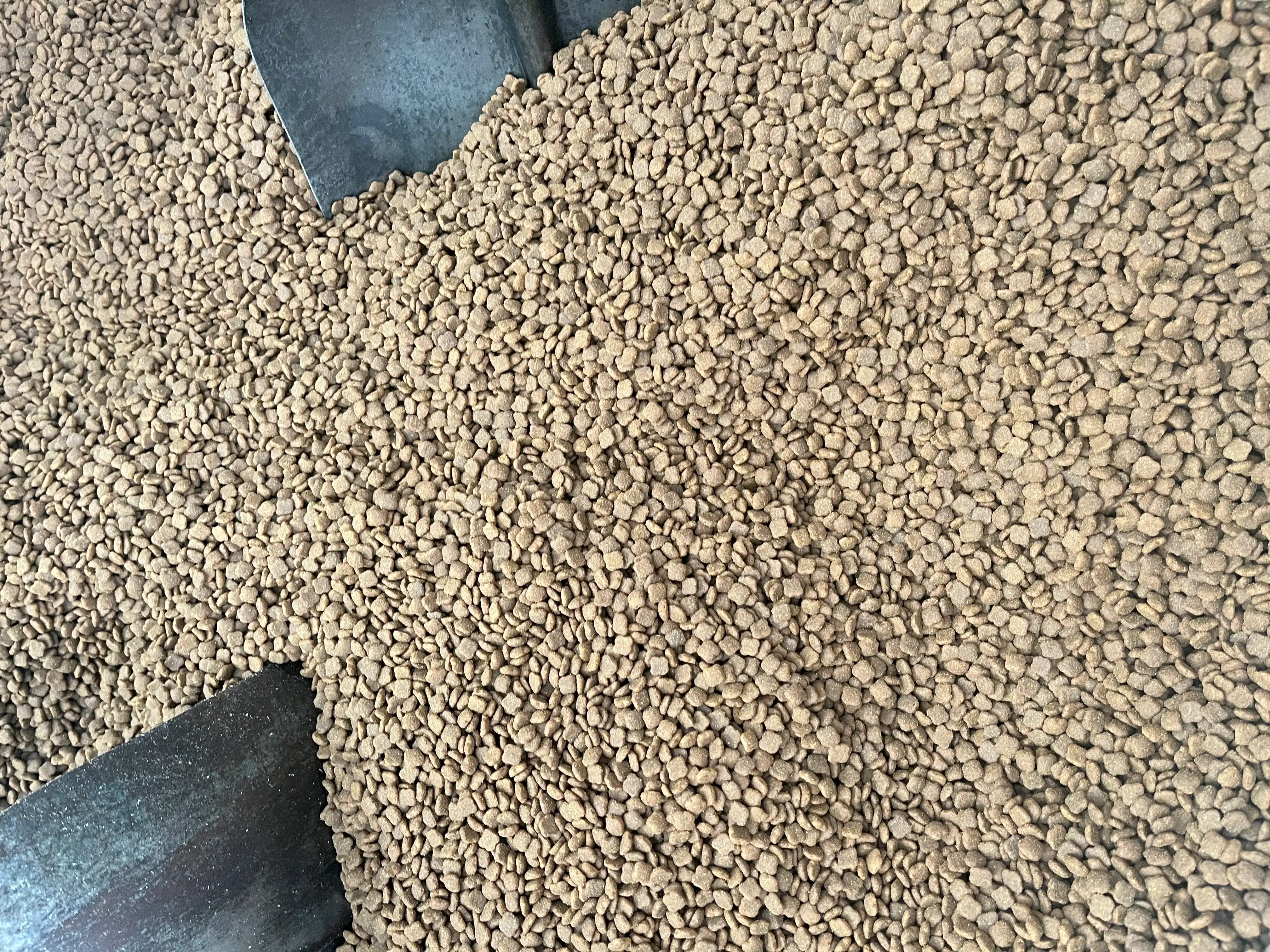
Green Pet Care Co., Ltd.: Your Partner in Pet Nutrition
As a leader in the pet products industry, Green Pet Care Co., Ltd. is committed to providing high-quality, nutritionally balanced pet food that meets the evolving needs of pet owners. Established in 2014, our company has built a strong reputation for excellence, with products exported to European, American, and Southeast Asian markets. Our mission is to create a healthy, green paradise for pets, where they can eat with confidence, play safely, and enjoy life to the fullest.
Why Choose Green Pet Care Co., Ltd.?
Experience and Expertise: With many years of experience in the pet food industry, we understand the unique dietary needs of cats. Our team of experts continually researches and develops new products to ensure that we offer the best possible nutrition for your feline friend.
High-Quality Ingredients: We prioritize the use of premium ingredients in all our pet foods. Our high protein, low carb dry cat food is made with carefully selected animal proteins and low-glycemic carbohydrate sources to support your cat's health and well-being.
Commitment to Safety and Quality: Our products are manufactured in state-of-the-art facilities, adhering to strict quality control standards. We are dedicated to providing safe, reliable, and effective pet food that you can trust.
Environmental Responsibility: At Green Pet Care Co., Ltd., we are committed to sustainability and environmental stewardship. Our products, including our Duofu and corn cat litters, are designed with the environment in mind, offering eco-friendly options for conscientious pet owners.
Affordable Pricing: We believe that high-quality pet food should be accessible to all pet owners. Our products are competitively priced, ensuring that you can provide your cat with the best nutrition without breaking the bank.
Our Product Range:
High Protein, Low Carb Dry Cat Food: Specially formulated to meet the natural dietary needs of cats, our dry cat food is packed with high-quality proteins and low-glycemic carbohydrates. This diet supports healthy weight management, energy levels, and muscle maintenance.
Eco-Friendly Cat Litter: Our innovative cat litters, including Duofu and corn cat litter, offer superior odor control, clumping ability, and environmental benefits. These products are made from renewable resources and are biodegradable, making them an excellent choice for eco-conscious cat owners.
Stylish Pet Accessories: In addition to pet food, we offer a range of pet accessories, including food bowls and pet toilets, known for their stylish designs and durability. These products are both functional and aesthetically pleasing, enhancing your pet's living environment.
Conclusion
The rising popularity of high protein, low carb dry cat food reflects a growing awareness among cat owners about the importance of proper nutrition. By choosing a diet that aligns with your cat's natural dietary needs, you can help them lead a healthier, more active life. At Green Pet Care Co., Ltd., we are dedicated to supporting the well-being of your feline friends with our high-quality, affordable products. Whether you're looking for premium cat food, eco-friendly cat litter, or stylish pet accessories, we have everything you need to create a happy, healthy home for your pet. Choose Green Pet Care Co., Ltd., and give your cat the nutrition and care they deserve.
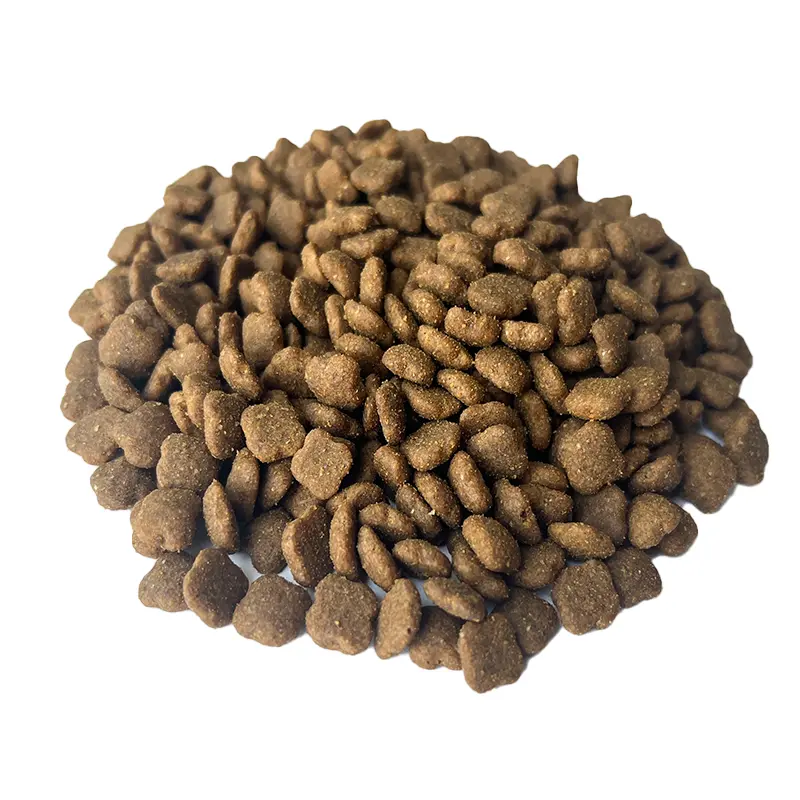
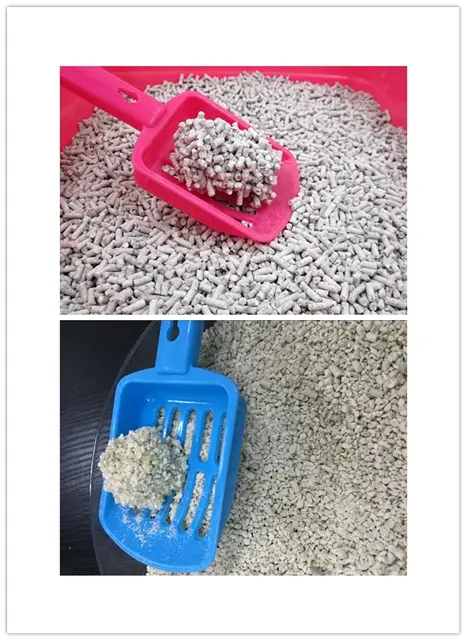

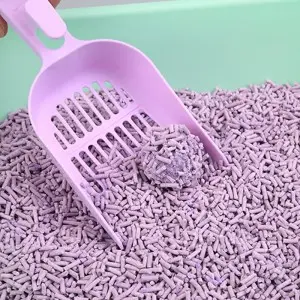
267.webp)

